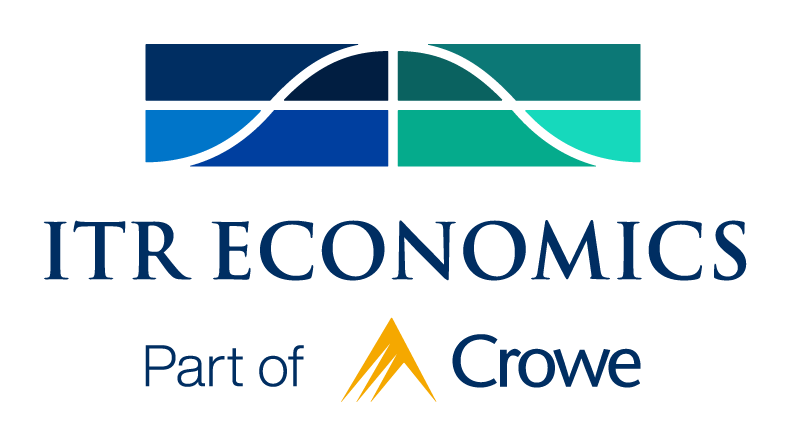July 29, 2024
- Home
- portfolio
- TrendsTalk
- July 29, 2024
INFLATION TRENDS AND OUR OUTLOOK
This week on TrendsTalk, ITR Economist Lauren Saidel-Baker reviews the most recent inflation trends and touches on the impact they have on the economy. What might past and present inflation trends say about the future? Tune in to find out!

MEET YOUR GUEST HOST
Lauren Saidel-Baker
Lauren Saidel-Baker, CFA, is a speaker and economist at ITR Economics. She provides consulting services for small businesses, trade associations, and Fortune 500 companies across a spectrum of industries.
Since joining ITR Economics, Lauren has brought enthusiasm and in-depth insight to our analysis of various industry trends. Her expertise captivates audiences, and her experience in the financial industry supports her extensive knowledge of the applicability of ITR Economics’ programs.
The below transcript is a literal translation of the podcast audio that has been machine generated by Notta.
Lauren Saidel-Baker:
Hello and welcome to this episode of ITR Economics Trends Talk, your source for unbiased apolitical economic information. I’m Lauren Saidel-Baker and I’m filling in for Taylor St. Germain this week and I’m so excited to talk to you about inflation.
This has been a hot button issue across the economy recently, critically as the inflation numbers are limiting what the Fed can do in terms of how quickly we’ll see interest rate cuts this year and how many we might see. Now for more information on the Fed specifically, I’m going to steer you over to our other show, FedWatch, but I do want to dig into some of the inflation numbers today. The one that we all tend to follow, consumer price index, that is goods and services, everything that we really see on a finished goods perspective from the consumer side of things.
So if you’re just hearing inflation quoted in the financial media, there’s a very good chance they’re talking about CPI. Now we all as consumers, as individuals living in the U.S. right now, are more acutely aware of consumer price inflation, but we kind of have to go back and do a little history lesson to understand why that is and why we all have a little collective whiplash today.
In the decade between the Great Recession and the COVID pandemic, that roughly 10-year time frame, consumer price inflation was actually historically low. We very rarely saw that CPI number even reached the 2% level, which is the Fed’s targeted range for inflation. So I think we all collectively got used to very low inflation for quite a long time. Cue COVID, the supply chain hurdles and so many other constraints, we really saw inflation shoot higher. In fact, the consumer price index reached a peak of roughly 9% during that time frame. So we all got that collective whiplash that I mentioned earlier. We saw prices on grocery store shelves really shoot higher in a very short time frame and in a way that we were not accustomed to. So the Fed has done a lot of interest rate raising this cycle to bring that inflation under control.
Let’s check in on where we stand today. For a while, coming off of that 9% peak, inflation was moving very steadily lower. We call this disinflation. So inflation is still positive, but that number, that percentage that we quote came down from about 9% until it reached roughly the 3.5% range. Now at that point earlier this year, that inflation reading moved much more sideways rather than continuing on that smooth, linear trajectory down. So when you hear about inflation being stickier than expected or being more persistent is the way I’ve heard this termed.
That’s what we’re talking about. We really hovered in that 3, 3.5% range for quite a while, many months, moving much more sideways than, as I said, seeing that continued cooling and price levels. Inflation is really a tale of two cities at the moment, because when we start to take the pieces apart, goods inflation is very well under control. That disinflationary story has persisted on the good side of things. If you look at commodity prices, raw materials, that’s where we even see some pockets of deflation, that is price levels going down on an outright basis.
But there’s something else happening here that is keeping that inflation a bit more persistent, keeping it a little stickier, and that’s the wage side of things. No surprise to anyone. We’re in a very tight labor market. We have been for several years, and that’s had huge upward pressure on wages and really been supporting wage inflation. So as we look at wage inflation, which is today coming down, so again, disinflation is the story here. We do still see the labor market loosening up, but it’s much tighter than is historically normal, and that wage inflation component is more elevated than our trailing long -term average. So put that all together, and it brings us to this continued disinflationary, but again, sticky, persistent disinflationary environment.
Now, the good news is that our consumer price index 1/12 rate of change did in the most recent reading. below that 3% level. So we’re headed toward 2%, but just not doing it quite so quickly as we maybe thought several months or quarters ago. Given the most recent inflation read, I still think that Fed cut in September is on the table and is in fact likely, but inflation is going to be critical to watch going forward. And I want to warn you, as I talk about inflation coming down, inflation cooling, this is not the same thing as price levels declining. There’s that critical distinction we need to make between disinflation on the one hand and deflation on the other. And while the rest of 2024 is shaping up to be a disinflationary year, don’t get too comfortable because we do expect inflation to come back in 2025 as the macroeconomic cycle picks back up and really to be more elevated for the rest of this decade.
So if we go back to that history lesson, where we were in the past decade, that post -great recession to COVID lull, it’s going to be a good one for the history books, but that is not where we should base our decision -making process going forward. Prepare yourself from a business side of you, from a consumer side of you too, for relatively higher inflation, but relatively more normal historic inflation going forward. That’s all for today. Taylor will be back next week.
We hope this information is helpful. If you found it such, please be sure to like and subscribe to our channel. Taylor will see you next week, but I’m Lauren Seidel Baker. Thanks for joining me.





